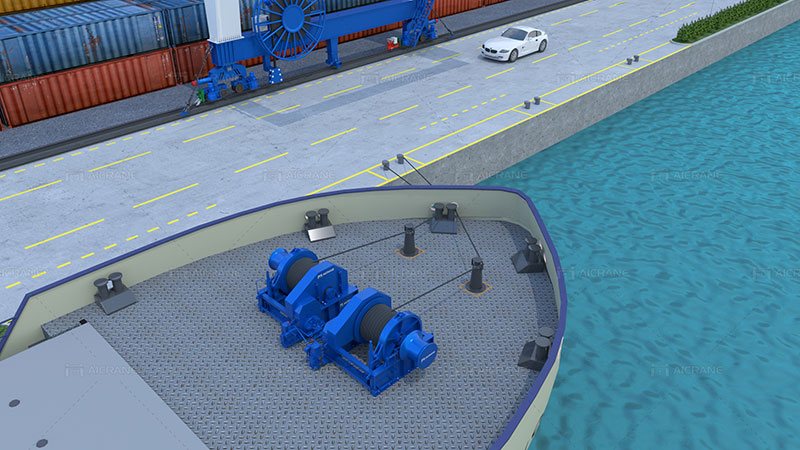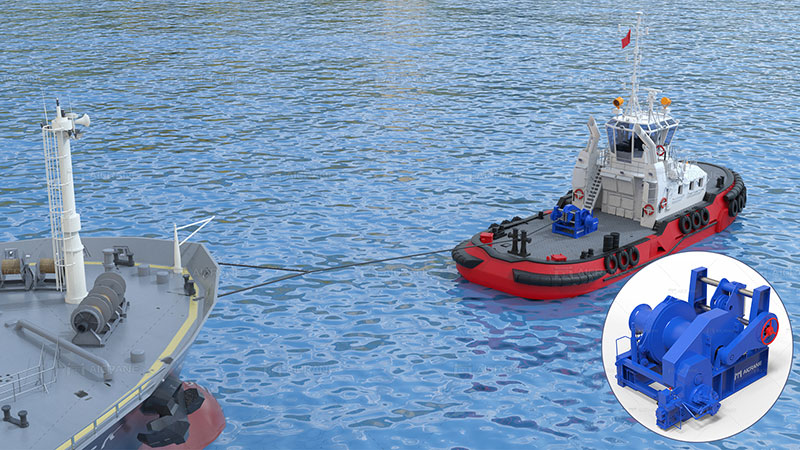Marine winches are indispensable tools in various maritime operations, from vessel mooring to cargo handling. To ensure the longevity, reliability, and safety of these critical components, regular maintenance and thorough inspections are essential. This article provides an in-depth guide on how to effectively maintain and inspect marine winches, ensuring their optimal performance and contributing to the overall efficiency of maritime operations.
Importance of Maintenance and Inspection
Marine winches are subjected to harsh environmental conditions, heavy loads, and continuous use. Neglecting their maintenance and inspection can lead to mechanical failures, operational downtime, and safety hazards. Regular maintenance and inspections help identify issues before they escalate, extend the lifespan of the winch system, and prevent costly breakdowns.

Maintenance Guidelines
1. Lubrication: Proper lubrication is crucial for the smooth operation of marine winches. Regularly lubricate all moving parts, including gears, bearings, and rollers, using manufacturer-recommended lubricants. Over time, saltwater exposure can cause corrosion, making regular lubrication even more important to prevent wear and tear.
2. Cleaning: Regularly clean the winch components to remove dirt, salt, and debris that can accumulate over time. Use fresh water and a mild detergent to prevent corrosion and maintain the winch’s appearance.
3. Visual Inspection: Conduct routine visual inspections of the winch to identify any visible signs of wear, corrosion, or damage. Pay close attention to cables, wires, and connections, as well as bolts and fasteners that may have loosened due to vibrations.
4. Cable Maintenance: Inspect the winch cables for fraying, kinks, or signs of wear. Damaged cables can lead to sudden failures and accidents. Replace any damaged cables immediately to ensure safe operations.
5. Electrical System: If the winch is electrically powered, inspect the wiring, connectors, and control panel for signs of damage or corrosion. Ensure that electrical connections are secure and free from moisture, as this can affect the marine electric winch performance.

Inspection Protocols
1. Pre-Operation Inspection: Before each use, perform a pre-operation inspection. Check for proper cable winding, ensure the drum and gears are clean, and verify that safety mechanisms, such as emergency stop buttons, are functional.
2. Regular Inspection Schedule: Establish a regular inspection schedule based on the winch’s usage frequency and environmental conditions. Quarterly or semi-annual inspections are recommended, with more frequent checks for winches used intensively.
3. Component Checks: During inspections, examine all components, including the motor, gearbox, brake, and drum. Look for signs of overheating, excessive vibration, or abnormal noise, as these may indicate underlying issues.
4. Cable Inspection: Inspect the cables for signs of wear, corrosion, and damage. Pay attention to areas where cables are bent or come into contact with other surfaces, as these are common points of failure.
5. Load Testing: Periodically perform load testing to ensure that the winch can handle its rated capacity. This test should be conducted using calibrated equipment to ensure accurate measurements.
6. Safety Features: Test all safety features, such as limit switches and emergency stops, to verify their functionality. These mechanisms play a crucial role in preventing accidents and protecting personnel.
Conclusion
Proper maintenance and inspection of marine winches are paramount to their performance, safety, and longevity. By adhering to regular maintenance guidelines and inspection protocols, maritime operators can prevent unexpected failures, reduce downtime, and ensure the safety of personnel and equipment. Investing time and effort into the care of marine winches ultimately contributes to the overall efficiency and success of marine operations, allowing vessels to navigate the challenges of the sea with confidence.
